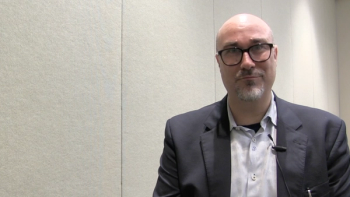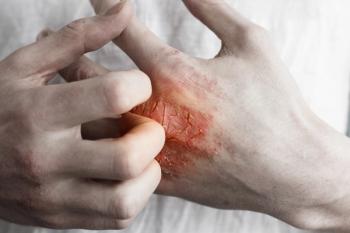
Sandoz will now launch both high-concentration and low-concentration versions of Hyrimoz (adalimumab-adaz) in July.

Laura is the vice president of content of Managed Healthcare Executive® (MHE) and all its brands, including Formulary Watch® and Chief Healthcare Executive®. She has been working on MHE since 2019 and has been with MHE's parent company, MJH Life Sciences®, since 2011. She has an MA in business and economic reporting from New York University.
You can reach her at ljoszt@mjhlifesciences.com or you can connect with her on LinkedIn or Twitter.

Sandoz will now launch both high-concentration and low-concentration versions of Hyrimoz (adalimumab-adaz) in July.

Sandoz will now launch both high-concentration and low-concentration versions of Hyrimoz (adalimumab-adaz) in July.

Certain biomarkers identified by these devices can be used to identify survivors of trauma who need further evaluation.

Medi-Cal, California's Medicaid program, has contracted with Pear Therapeutics for members in 24 counties to participate in an outpatient program for stimulant use disorder.

Most (91%) of the patients were seen by gastroenterologists. Those seen by allergists were more likely to have comorbid atopic conditions, such as asthma, allergic rhinitis and atopic dermatitis.

Patients with severe asthma with or without coexisting chronic rhinosinusitis and nasal polyps (CRSwNP) experienced continued improvements in exacerbations and lung function in an extension study.

Patients with eosinophilic esophagitis experience a range of symptoms that can vary by age, which may contribute to younger patients experiencing a delay in diagnosis, according to a poster presented at the American College of Allergy, Asthma and Immunology Annual Scientific Meeting.

Adherence to follow-up examinations is crucial for early identification of recurrence of chronic rhinosinusitis with nasal polyps (CRSwNP).

Despite differing characteristics, patients have similar responses to treatment regardless of when they were diagnosed with eosinophilic esophagitis (EoE).

Symptoms of chronic rhinosinusitis with nasal polyps can be a burden for patients, but Dupixent was able to successfully reduce the number of days with severe symptoms.

A real-world study of children with moderate-to-severe atopic dermatitis (AD) in China found Dupixent can reduce symptoms and improve pruritus. Traditional therapies had little effect, according to the researchers.

A sizable majority (69%) of eosinophilic esophagitis (EoE) patients only had one food trigger.

The majority of guidelines and recommendations available limit biologics to cases of severe and uncontrolled chronic rhinosinusitis with nasal polyps (CRSwNP) and require prior surgery.

Payers need to reframe how they view obesity as not just a health and wellness issue, but as a progressive chronic disease that needs medication, explained David Skomo, RPh, chief operations officer at WellDyne.

Thus far, value-based contracts for prescription drugs has not been transformative because of the scalability challenge for payers, explained Gregory Warren, FSA, FCA, MAAA, partner and consulting actuary with Axene Health Partners.

A national study in Germany identified the baseline characteristics of patients with moderate-to-severe atopic dermatitis (AD) to understand how they are usually treated with Dupixent in the real world.

Therapeutic goals of reducing eosinophil counts below a certain level in eosinophilic esophagitis (EoE) has a marginal benefit for the impact on quality of life and treatment burden.

Patients with persistently controlled atopic dermatitis (AD) who had their doses reduced were able to maintain their low disease activity.

Patients with chronic rhinosinusitis with nasal polyps had the greatest number of outpatient visits and the shortest time between visits.

Less-effective coping strategies, such as passive and palliative reaction, were associated with a significant impact on health-related quality of life in eosinophilic esophagitis (EoE).

The increases had no impact on the efficacy of the drug and were rarely associated with symptoms or sequelae.

Certain problems such as pain/discomfort, worrying and fear of the persistence/recurrence of atopic dermatitis (AD) became more common among patients with AD since the start of the COVID-19 pandemic.

A review of multiple studies found the COVID-19 exacerbated the economic, social and psychological difficulties that patients with cancer were already facing because of their cancer.

Dupixent was already approved for patients 6 years and older. The new approval makes the drug available to children 6 months to 5 years whose atopic dermatitis is inadequately controlled.

A 52-week open-label extension study supported the long-term use of Dupixent to treat adolescents with moderate-to-severe atopic dermatitis.

Although climate change affects the entire global population, historically marginalized and under-resourced communities will be disproportionately affected.

Data gathered from electronic medical records found that the results in a real-world patient population with atopic dermatitis were consistent with those found in clinical trials.

New survey from American Medical Association identifies the continued burden of prior authorizations on physicians.

Safe and effective long-term treatment is important for stable disease control in atopic dermatitis.

Patients with eosinophilic esophagitis (EoE) are faced with delayed diagnosis, burdens related to symptoms, quality of life and cost, but lack targeted systemic therapies to improve long-term disease control.